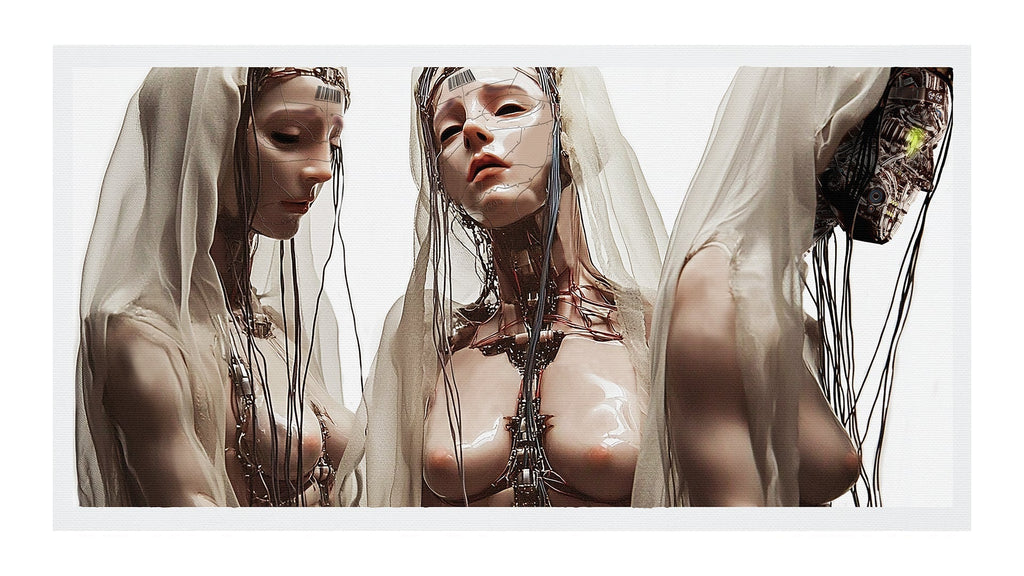BLACK SCALE X GOLGO COLLABORATION
"Gemini VI"

The image and likeness with which humans were created is transformed with machine intervention, the divine figure no longer embodies an unfathomable mystery, but an assembled being. In Geminis 6 the body, vessel of the soul, is presented as programmable surfaces, pierced by wires and electronic boards, blurring the line between organic and artificial. Within the cyberpunk imaginary, the future does not arrive clamorously, but as a silent mutation, in this case in the form of an automated spirituality, of a replicable soul, of a devotion that no longer requires consciousness, only repetition. Golgo stands on this threshold, not to deny or criticize religion, but to submit it to an aesthetic autopsy.
Ten oil paintings and two sculptures make up this exhibition in which Mary and Jesus appear as cybernetic bodies. Golgo revisits the meticulous hyperrealism that has defined his practice, where virgins of incredible beauty questioned a perfection that bordered on industrial aesthetics, suggesting a mass-produced sacredness. Now, that same technical precision becomes a conceptual scalpel that reveals the automation of faith, its transformation into protocol, in a visual system that repeats itself, often without true veneration.

The works are filled with references and layers of conceptual imagery. In the proposal of the codification and mechanization of the divine, there are gestures to Ghost in the Shell, a cyberpunk classic that depicts that the soul can be transferred to a machine. In several pieces, the figure of Christ appears inspired by Herman Makkink's sculpture that Stanley Kubrick placed in A Clockwork Orange as a symbol of a faith turned into spectacle. Similarly, the masks worn by some of the performances refer to the opera character in Pagliaccio, the clown who embodies suffering disguised and hidden. What is sacred does not disappear but mutates into something else: into a worn-out symbol or an intervened body.

Geminis 6 refers to the Russian and American space missions that initiated experiments with artificial and humanoid bodies, underlining the link between the body, technology and transcendence. Golgo's character has always been mediated by a mask, a device of anonymity, but also of narrative construction. His work has never been alien to disguise, to concealment as a form of appearance. This exhibition becomes a double gesture of unmasking, that of the author who emerges expressing questions that have accompanied him since childhood, and that of a faith that reveals its structure as a system, as an interface or as a machine.

